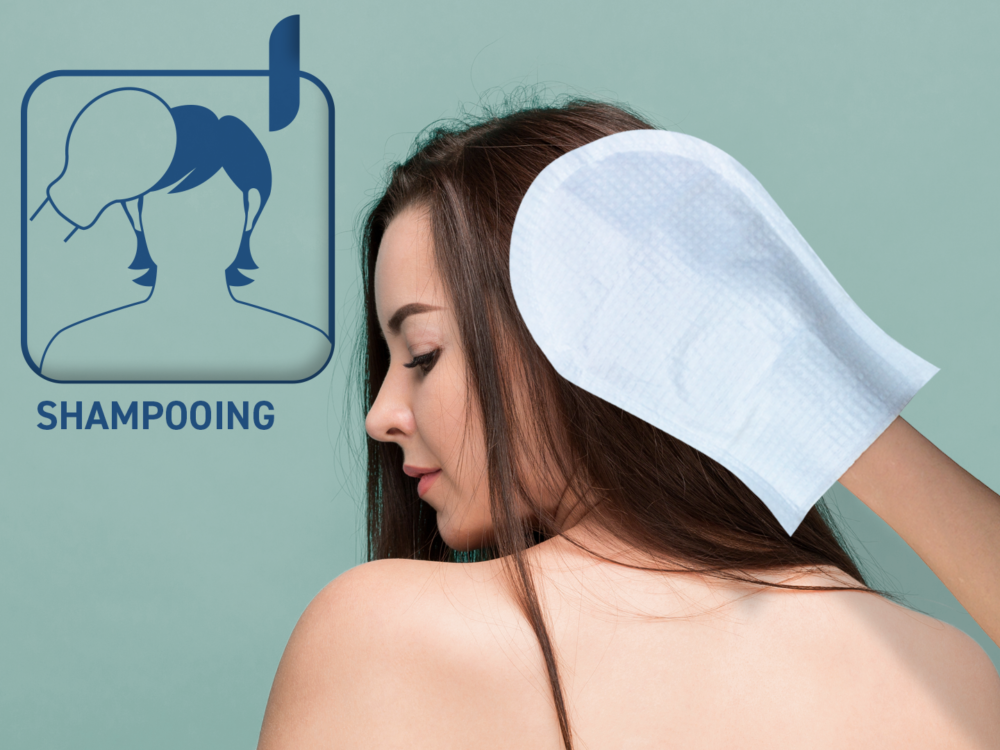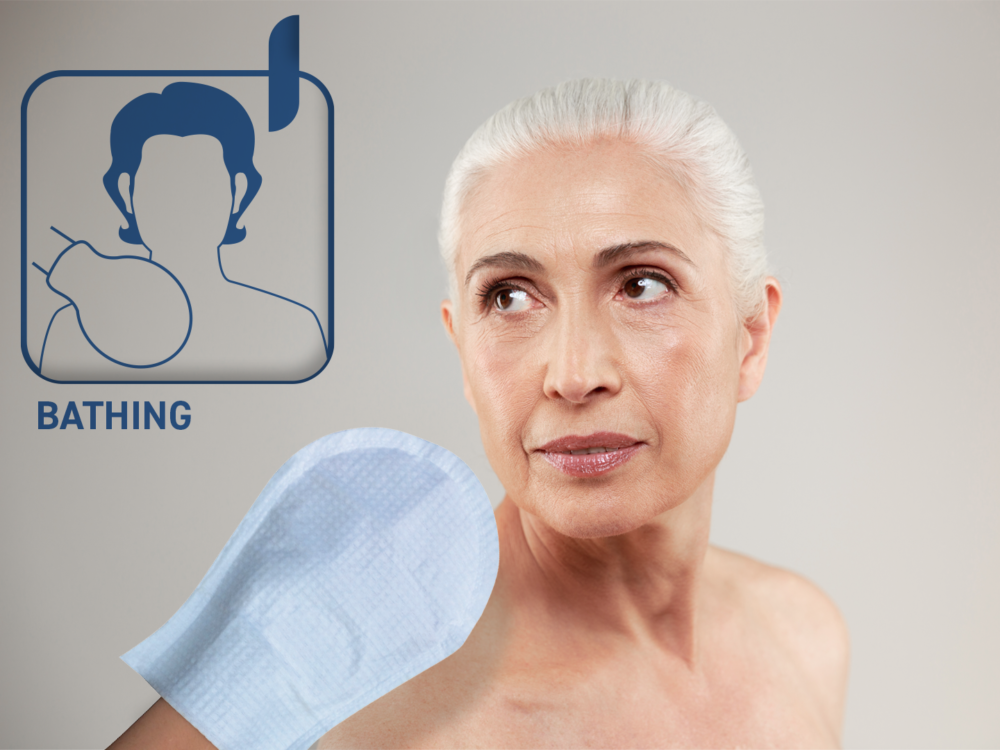Contacter le service clients

Vous êtes :
During a traditional bed bath, the basin and water can be major sources of bacterial contamination and it is proved that 62% to 98% of bathing basins are contaminated (1).
It is thus a major risk especially for frail or immunosuppressed patients. In addition, the mechanical friction during a traditional bath deposits cutaneous flora in the basin, which may result in the presence of SMRSA, Acinetobacter, Pseudomonas, E. Coli and many other pathogens that have been detected in the bathwater and in the environment (nurses’ gloved hands, objects handled, towels, etc)(1).
Tap water may also be a potential source of waterborne nosocomial infections.(3)
Risk analysis shows that exposure may occur through contamination of the hands or professional clothing (6), particularly when the task is interrupted.(7)
In 57.8% of cases during bathing and 50% of cases during the changing of protections, interruption of care was not accompanied by glove removal resulting in 23% to 65% of healthcare professionals who have been exposed to splashes.(8)
With age, the skin tends to atrophy and dry out; it is less supple and less firm (parchment effect).
The traditional bath may then be too aggressive, particularly in certain areas of the body and sometimes results in the appearance of tears.(5)
The pre-moistened wash glove allows quick and efficient bed bath without using traditional combination of basin and water.
The glove material should meet the most stringent demands (thick, non-woven and ultra-soft; pleasant hypoallergenic lotion).
An internal plastic liner is an additional protection, mainly to prevent the infectious risk due to interrupted tasks.
Following use, the pre-moistened wash glove must be disposed in the household waste or according to the current protocol.
A poster presented at APIC* 2010 showed that abolishing the use of basins and replacing the conventional bed bath with no-rinse bathing, resulted in a 78% drop in the rate of urinary infections associated with vesical catheters in 6 months. (Stone S, et al., Removal of bath basins to reduce catheter-associated urinary tract infections. Poster presented at APIC 2010, New Orleans, LA, July 2010. *APIC : Association for Professionals in Infection Control and Epidemiology ,USA).


The patients and caregivers preference have been proven by a study (10).
| No-rinse bathing, single use device | Conventional bed bath (basin+water, etc.) | No preference | |
| Patient’s preferred bathing method (51 patients questioned) | 24 (47%) | 11 (22%) | 16 (31%) |
| Caregiver’s preferred bathing method (54 caregivers questioned) | 47 (87%) | 6 (11%) | 1 (2%) |
No-rinse bathing with single-use gloves is also a mean to reduce by 20% the time dedicated for the bedbath and to cost control by 5% (11).
| No-rinse bathing, single use device | Conventional bed bath (basin+water, etc.) | |
| Preparation | 4 min. | 5 min. |
| Patient bathing | 21 min. | 26 min. |
| Post-bath cleaning | 4 min. | 5 min. |
| Total | 29 min. | 36 min. |
| Result | 20% time saved |
Another study showed that the average cost of bed baths over 6 weeks, per resident, was estimated at €218 in the experimental group (single-use glove no-rinse bathing) and at €232 in the control group (traditional bed bath with basin and water, etc.).
Results: 5% savings / costs
As a conclusion, no-rinse bathing with single-use gloves can be considered as the most efficient solution against risk of infection (11).
You can find more details on Dr.helewa pre-moistened gloves range here.